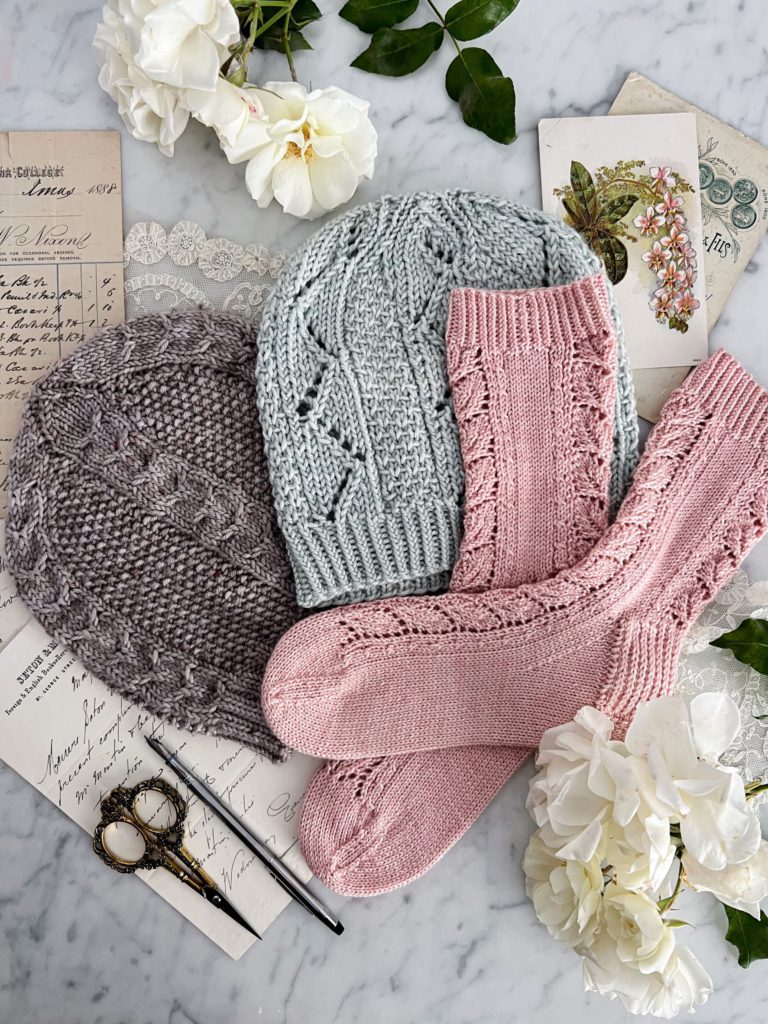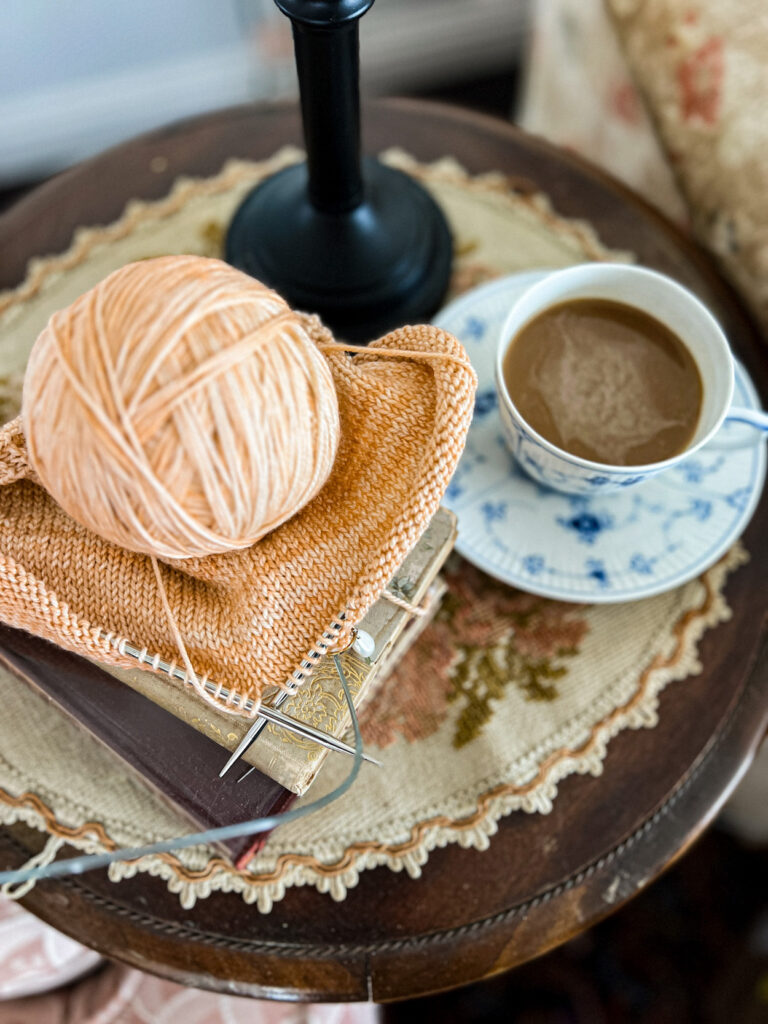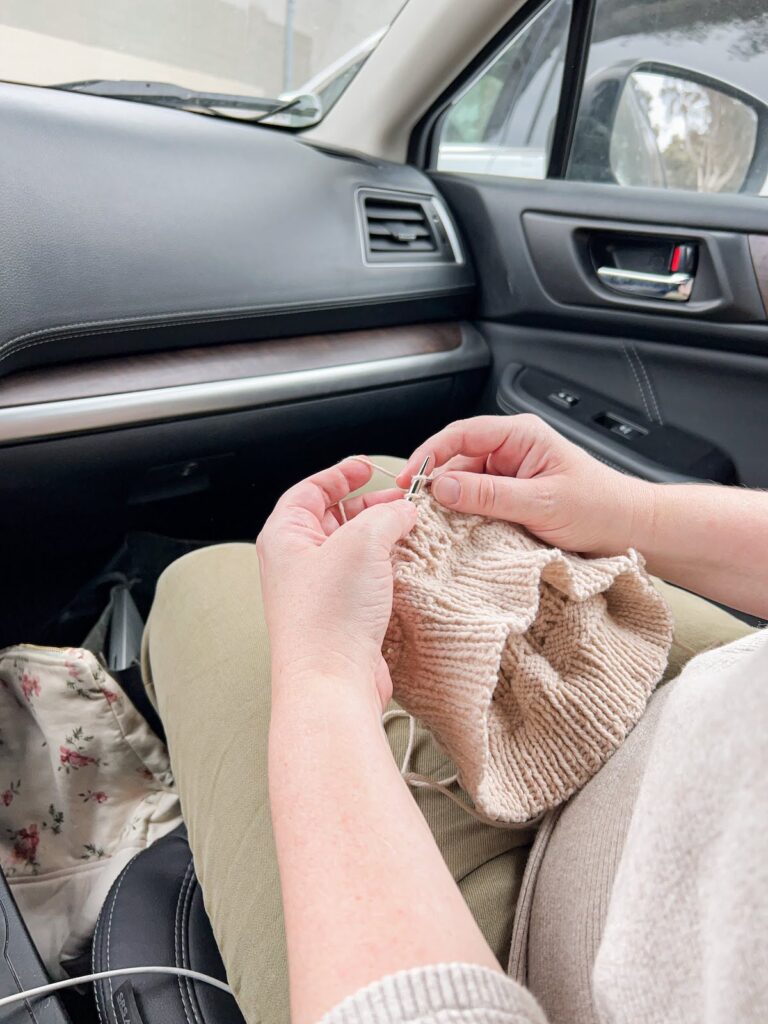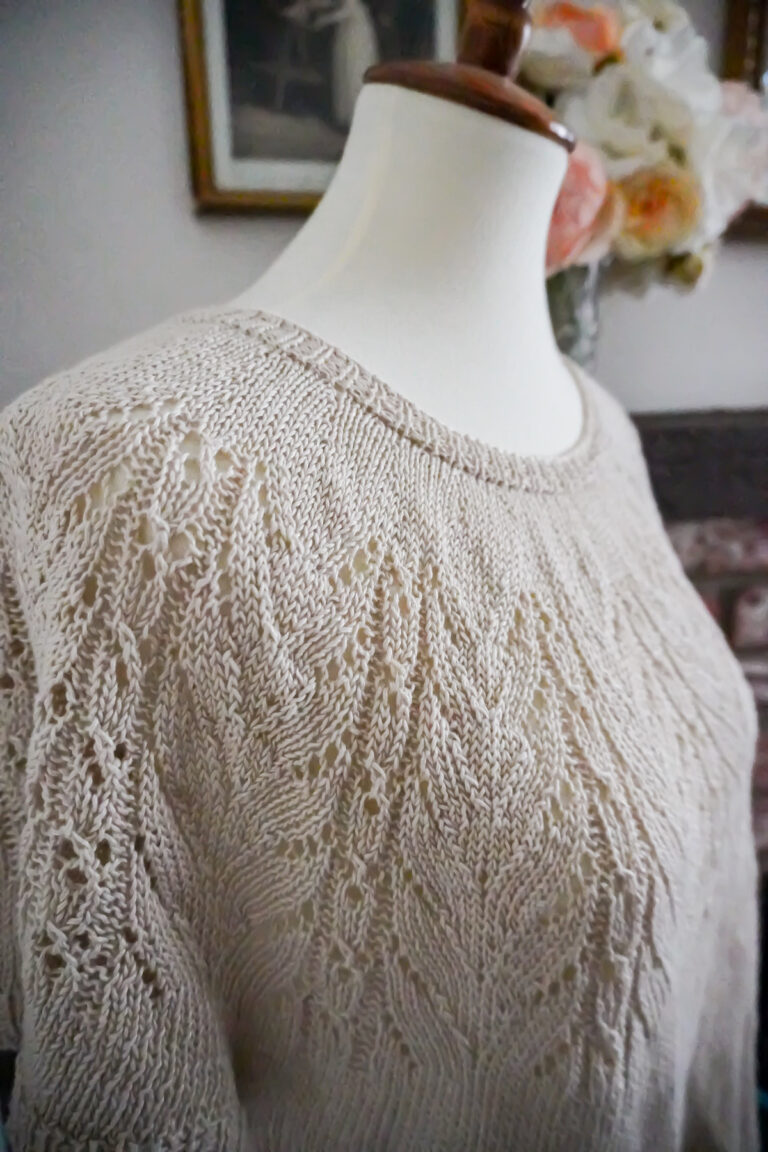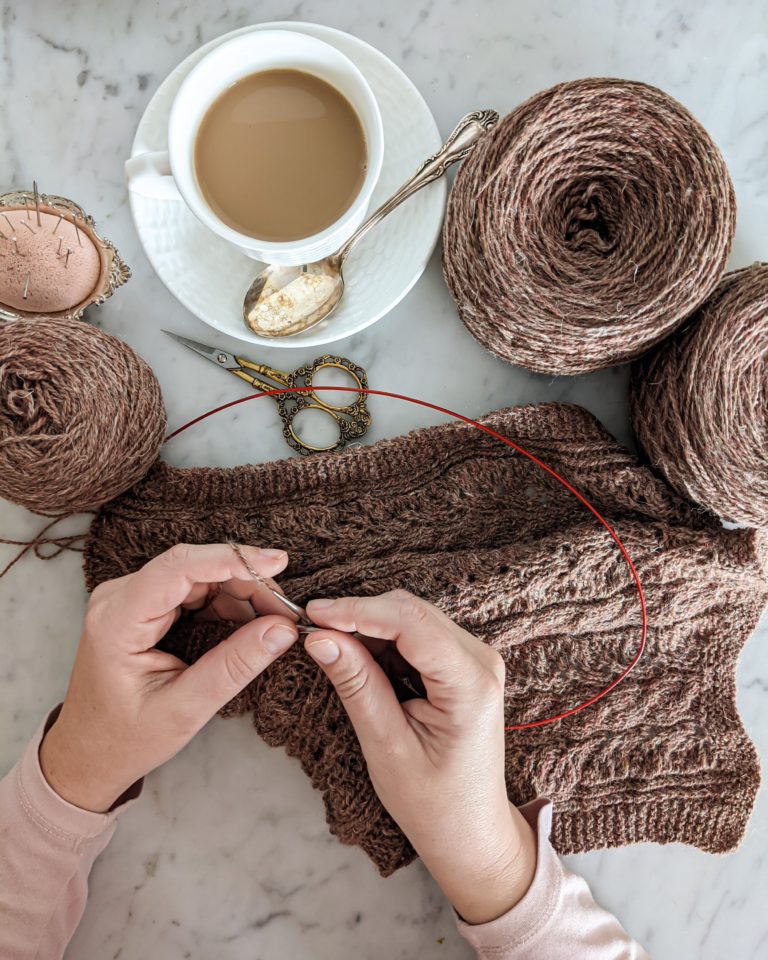It’s nearly summer here in the Northern Hemisphere, a time when many of us tuck away our handknits until the weather cools down enough to wear them. For me, that means making sure my knit socks are safely stored during the months when I’m mostly wearing sandals.
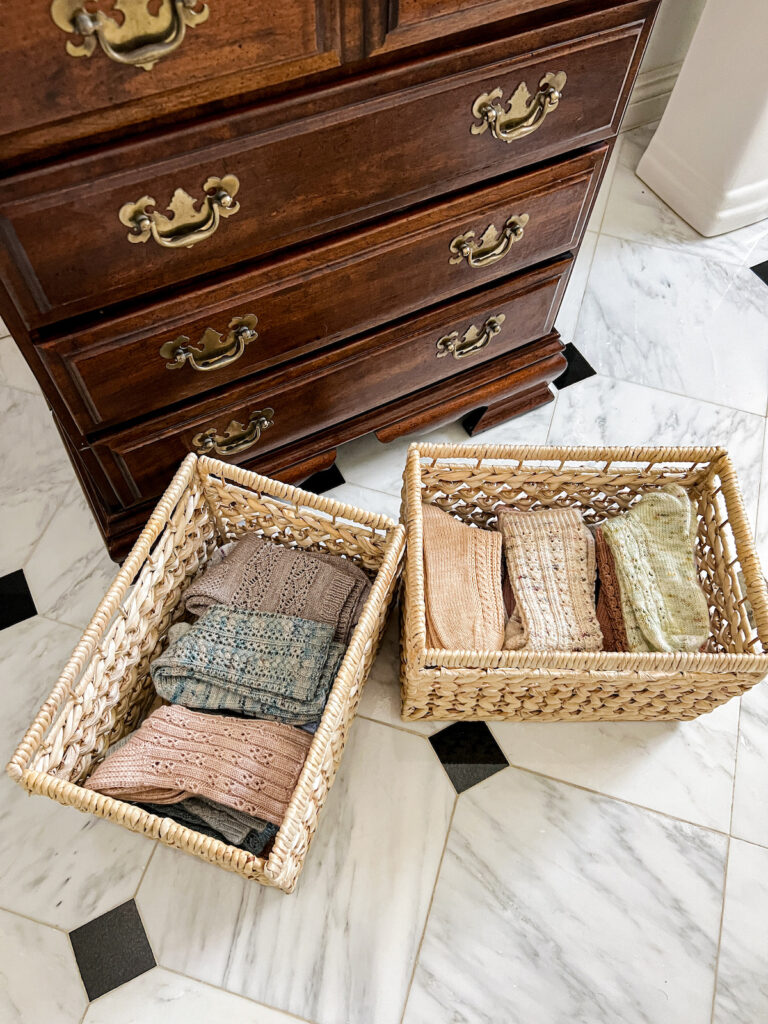
But how do we store our handknit socks to best protect them? There’s nothing worse than working 15, 20, or more hours on a pair of socks, tucking them away to wear when fall arrives, and discovering that they’ve been damaged in the intervening months.
It turns out, though, that there are three things you can do to help ensure the safety of your hand knit socks while they’re in storage. Let’s take a look at each.
This post contains affiliate links, which means if you choose to buy something through those links, I’ll receive a small commission at no extra cost to you. I will always identify affiliate links for you. Thanks for supporting my work!
1. Make sure your socks are clean and dry before storing them.
The first and most important thing you can do for your socks before tucking them away for a while is to make sure they are clean and completely bone dry. Pests like moths and carpet beetles love to munch on fibers that have little bits of food, sweat, and dead skin on them. If you put your knit socks away dirty, you’ll be more likely to find holes in them when you take them out again.
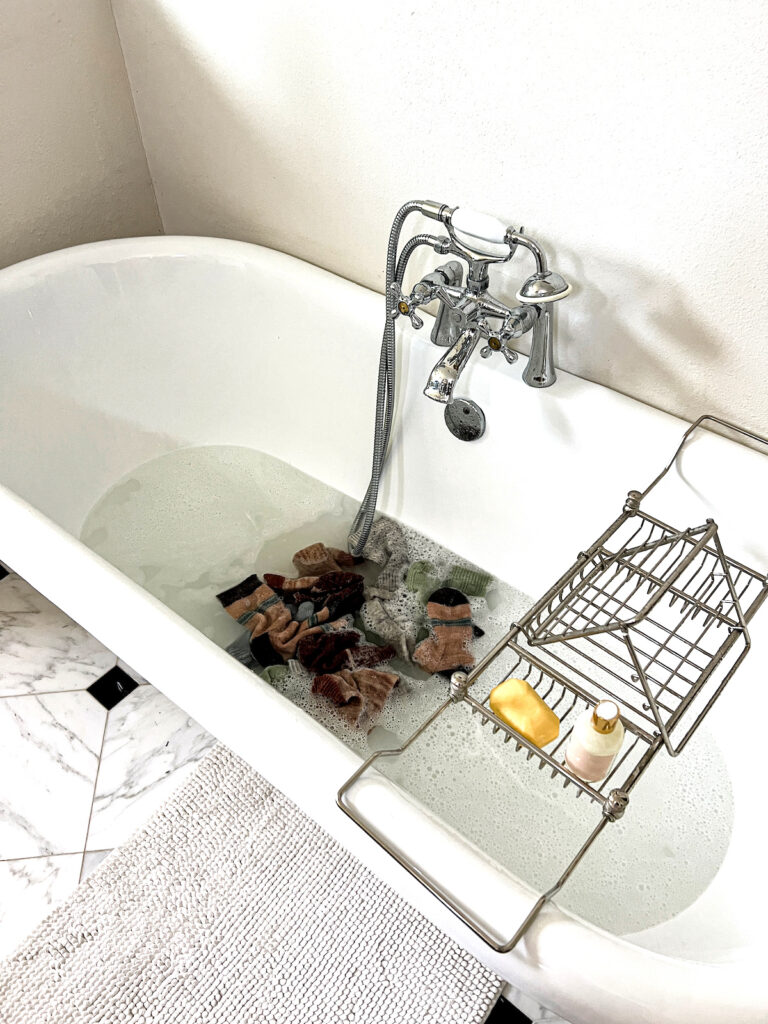
I’ve written an in-depth guide to how to wash and dry your hand knit socks, so we won’t belabor the point here. Just remember that you need to clean them thoroughly and make sure they are completely dry before you put them away. Damp socks do bad things in storage.
If you, like me, have a lot of socks and need to wash and store them all at once, I find that the bathtub can be a great place to soak them all before putting them away. I just dump a basket of socks into the lukewarm water, add a little wool wash, and let them sit for a while. Then I hang everything on a bamboo drying rack in the garden, where they’ll get lots of fresh air to dry them quickly.
2. Choose storage that is appropriate for your environment.
Now, this segment isn’t going to be all that helpful if you just keep your knit socks in your sock drawer all year round. I tend to rotate, though, and fill my sock drawer with thin cotton socks and store-bought socks during the summertime. My knit merino wool socks don’t see much wear during summertime, so I take them out of the drawer to free up space.
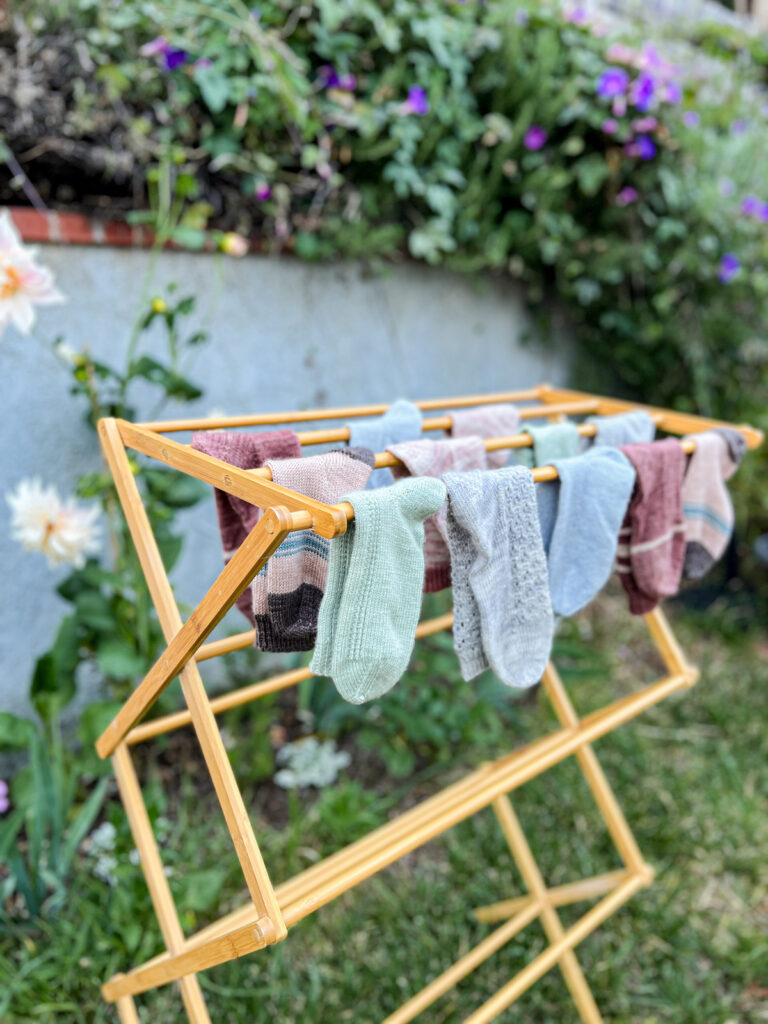
For those of us who move our socks to storage during summer, there are a few key things to consider when choosing your container for your socks.
Many knitters think that the safest way to store their knits is to put them in an air-tight container. While that works for some locales, it can be a fatal mistake in others.
See, if you live somewhere humid and choose an air-tight storage option, you’ll be trapping moisture in with your knits when you pack them up. Over time, that moisture can cause a musty smell and even mold or mildew on your stored knits. To prevent that, it’s best to use storage baskets with lots of air flow. I use these guys from IKEA, which have a fresh, grassy scent in addition to allowing air to move about.
If you live somewhere very dry, air-tight storage might be a good option for you. This could also be a good choice if you live somewhere very dusty or sandy, like the desert or the beach, where it’s hard to keep stored clothes clean.
In other words: know your home environment. This isn’t a one-size-fits-all situation.
3. Add pest control for extra safety.
If you have any reason to fear that your socks might end up with moths, carpet beetles, silverfish, or any other little pests eating them while they’re stored for a long time, you should consider adding additional pest control options to your storage.
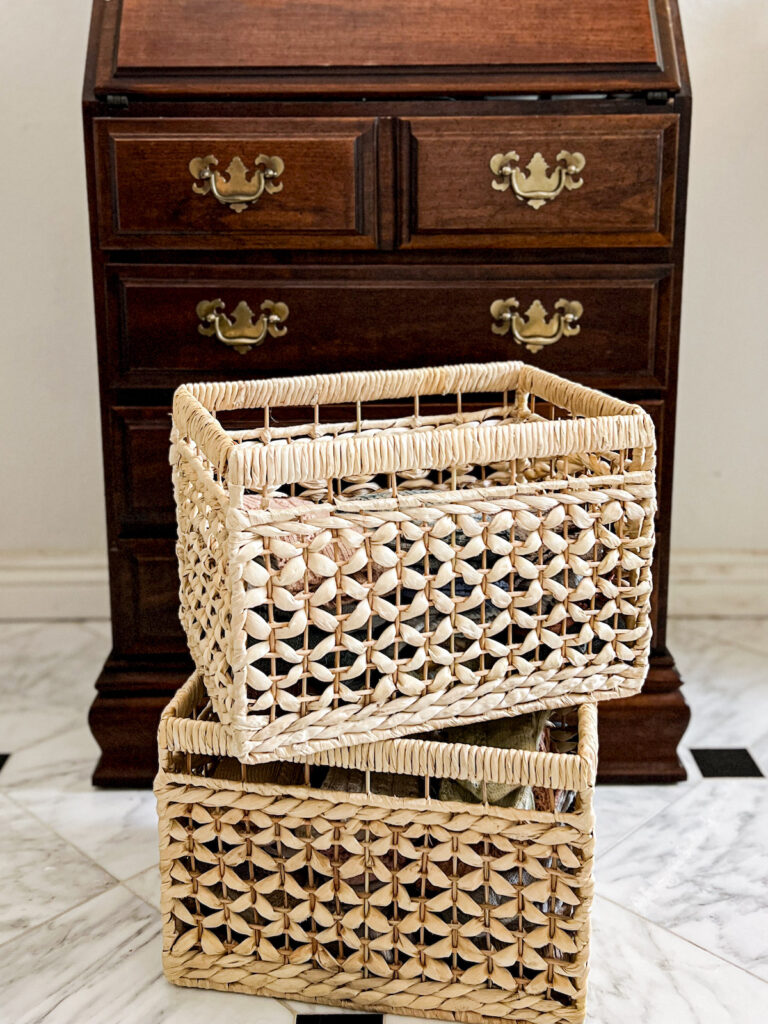
Cedar is an excellent natural pest repellent that also smells pleasant. I like to add a cedar sachet or two, like these (affiliate link), to my sock baskets. I also use these cedar disks (affiliate link) in my boxes and drawers, and I pop them onto hangers, too. Finally, you can get a vintage cedar chest via Craigslist or Facebook Marketplace, or score a new sock storage box like this one from Knit Picks. (affiliate link)
If natural materials aren’t strong enough to keep the pests at bay, you can also try mothballs or other pest control methods. I’m not a fan of those, though, because they tend to have terrible odors that linger. You also might find that the harsher chemicals irritate you.
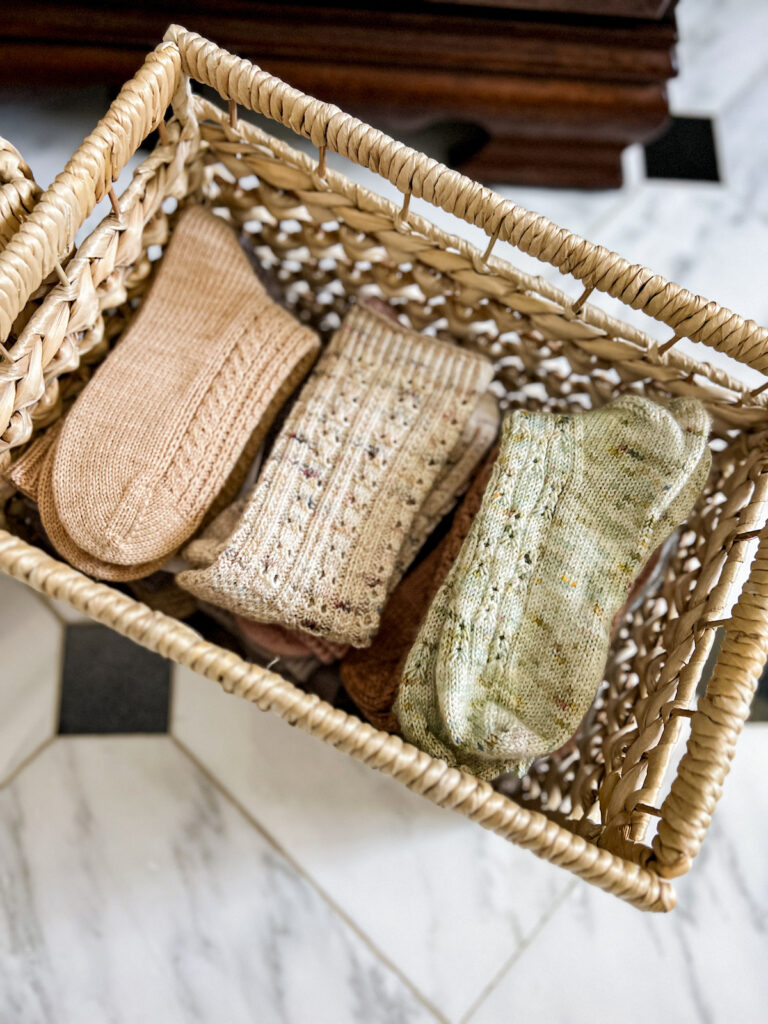
With a little care and foresight, you’ll find your handknit socks will last for years, especially if you store them well during the off season. I hope this post has been helpful to you and that you go forth with toasty toes once the weather cools down again.
If you’re looking for a new yarn to try for your next pair of socks or aren’t sure which sock yarn would be best for your needs, check out my top 5 sock yarn recommendations.
And finally, what if you have the sock yarn but haven’t turned it into a pair of socks yet? You still need to be thoughtful about how you store it. Here’s a helpful post from my friend Teresa of Classical Songbird Knits with tips and tricks for storing your yarn all year.
Let’s stay connected!
Join my newsletter for 30% off all new releases, regular updates with helpful tips and tricks, first crack at registration for upcoming workshops, exclusive discounts, and more.
Join the A Bee In The Bonnet Facebook Group to participate in knitalongs and other fun community events
Come hang out with me on the A Bee In The Bonnet TikTok
Follow along on the A Bee In The Bonnet Instagram
Get inspired via the A Bee In The Bonnet Pinterest

